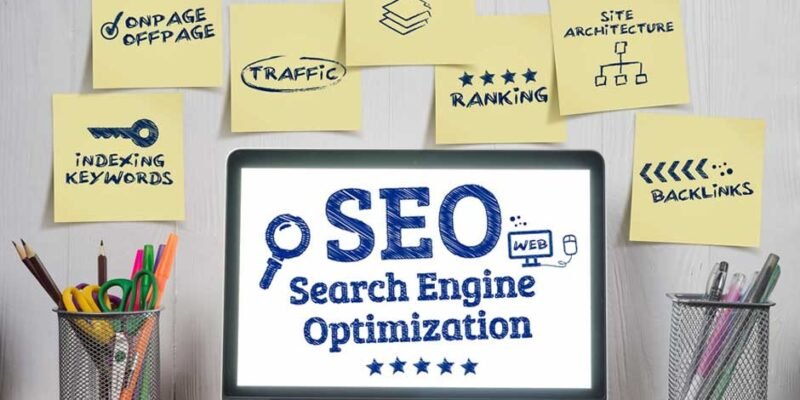In the digital age, having a website isn’t enough; you need to ensure it’s visible and attractive to your audience. This is where Search Engine Optimization (SEO) becomes crucial. A good SEO strategy can skyrocket your website’s visibility, making it easier for potential customers or readers to find you. Whether you’re a small business owner, a blogger, or running an e-commerce platform, understanding and implementing the right SEO techniques can significantly impact your website’s success.
This article delves into the best SEO practices that can help your website climb the ranks in search engine results. From optimizing your content with the right keywords to ensuring your site is mobile-friendly, each tip is designed to enhance your site’s reach and engagement.
These techniques are practical, straightforward, and crucial for anyone looking to improve their online presence.
So, whether you’re new to SEO or looking to refine your existing strategy, this guide provides valuable insights to help you navigate the ever-evolving world of digital marketing and make your mark online.
1.Enhancing Visual Appeal
Images can significantly impact a website’s appeal and engagement levels. High-quality stock photos can make your site more visually attractive, encouraging visitors to stay longer and explore more content. This increased engagement positively affects SEO rankings. However, it’s crucial to optimize these images for search engines. This includes using descriptive file names alt tags, and ensuring images are the correct size for quick loading. Stock photos, when used thoughtfully, can enhance the user experience and contribute to better SEO results.
2.Keyword Research and Optimization
Keywords are the cornerstone of SEO. Effective keyword research and optimization involve understanding what your target audience is searching for and how they phrase their queries. Incorporate these keywords naturally into your website’s content, titles, and meta descriptions. Tools like Google Keyword Planner can help identify relevant keywords with high search volume but low competition. Remember, stuffing your content with too many keywords can harm your SEO, so it’s important to maintain a natural and reader-friendly approach.
3.Creating Quality Content Consistently
Content is king in the world of SEO. High-quality, original content that provides value to your audience will rank higher on search engine results pages (SERPs). This includes well-researched articles, engaging blog posts, informative videos, and more. Consistently updating your website with fresh content also signals to search engines that your site is active and relevant, further boosting your SEO. Focus on creating content that addresses the needs and interests of your audience while reflecting your brand’s voice.
4.Mobile Optimization
With more people accessing the internet via mobile devices, having a mobile-optimized website is no longer optional for good SEO. A mobile-friendly website should have a responsive design that adjusts content layout based on the device being used. It should also have fast loading times and easy-to-navigate menus on smaller screens. Google’s Mobile-Friendly Test can help you check how well your site performs on mobile devices and offer suggestions for improvement.
5.Utilizing Internal and External Links
Internal linking involves linking to other pages within your website. This practice helps search engines understand the structure of your site and the relevance of different pages to specific keywords. It also keeps visitors engaged and encourages them to explore more of your content. External backlinks, on the other hand, are links from other websites to yours. High-quality backlinks, especially from authoritative sites, significantly boost your SEO as they signal to search engines that your content is valuable and trustworthy. Engage in ethical link-building practices by creating valuable content that others want to reference and avoiding any manipulative link schemes.
6.Leveraging Social Media for SEO
Social media can significantly impact your website’s SEO. Active social media engagement increases your online presence and directs traffic to your website. Sharing your content on platforms like Facebook, Twitter, and LinkedIn not only broadens your audience but also creates opportunities for your content to be shared further. Additionally, social media profiles often rank in search engine results, enhancing your overall online visibility. Integrate social media into your SEO strategy by regularly posting engaging content and linking back to your website.
7.Implementing Local SEO Strategies
Local SEO is crucial for businesses that operate in specific geographical areas, like a city or neighborhood. To optimize for local searches, ensure your business is listed in online directories and on Google My Business. Include location-specific keywords in your website content and metadata. Encourage customers to leave reviews on your Google My Business profile, as positive reviews can improve your local search rankings. Local SEO helps your business appear in relevant local searches, increasing your visibility to a targeted audience.
8.Utilizing SEO Analytics Tools
Effective SEO requires ongoing analysis and adjustment. Tools like Google Analytics and Google Search Console offer invaluable insights into your website’s performance. They can help track metrics like traffic sources, page views, and bounce rates. These tools also provide data on how users find your website, which keywords are driving traffic, and how visitors interact with your site. Regularly analyzing this data allows you to refine your SEO strategies, identify areas for improvement, and capitalize on what’s working well.
9.Site Speed and Performance Optimization
Website speed is a critical factor in SEO. Slow-loading sites can lead to high bounce rates, as users are likely to leave if a page takes too long to load. Optimize your site’s speed by compressing images, minimizing HTTP requests, and using caching. Tools like Google’s PageSpeed Insights can analyze your website’s speed and provide recommendations for improvement. A fast, smoothly functioning website not only ranks better on search engines but also provides a better user experience.
10.Regularly Updating and Refreshing Content
Regularly updating and refreshing your website’s content keeps it relevant and engaging. Search engines favor sites that are consistently updated with fresh content. This could involve updating blog posts, revising product descriptions, or adding new pages. Keeping your content current also demonstrates to your audience that your site is an active and reliable source of information. Regular updates can encourage repeat visits, increase user engagement, and ultimately improve your SEO performance.
Conclusion
Implementing effective SEO techniques is key to enhancing your website’s visibility and ranking on search engines. From leveraging social media and local SEO to utilizing analytics tools, optimizing site speed, and regularly updating content, each strategy plays a vital role in your overall SEO success. Remember, SEO is an ongoing process that requires constant attention and adaptation to the ever-changing digital landscape. By staying informed and proactive, you can ensure that your website not only reaches its target audience but also provides an engaging and valuable experience that drives traffic and fosters growth.

















Comments